Texas’ Flagship Flora
IN HONOR OF TEXAS NATIVE PLANT WEEK (the third week of October), the Wildflower Center rounded up some fun facts on our official Texas flora. Join us in celebrating the plants, flowers, shrubs and more that spell T-E-X-A-S in stems, blooms, fruit, paddles and spines!
ILLUSTRATIONS Samantha N. Peters
Texas State Flower: Bluebonnets
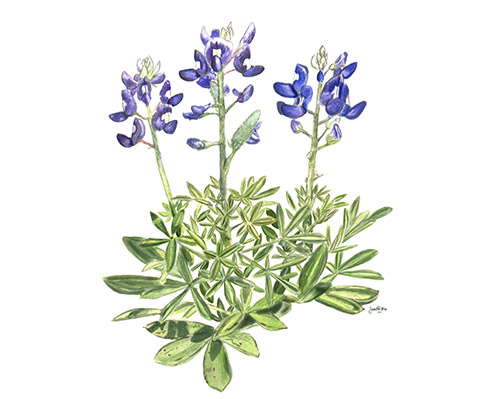
It won’t come as a surprise to most that the Texas State Flower is the bluebonnet. But did you know that ALL bluebonnets are Texas State Flowers? That includes the classic Lupinus texensis as well as five other species: Lupinus havardii (Big Bend bluebonnet), Lupinus perennis (sundial lupine), Lupinus plattensis (Nebraska lupine), Lupinus subcarnosus (Sandyland bluebonnet) and Lupinus concinnus (bajada lupine).
Texas State Plant: Prickly Pear Cactus
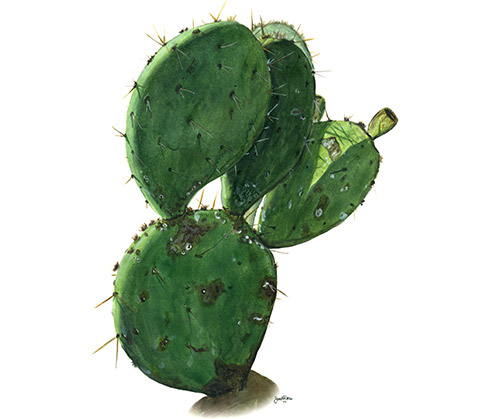
Beautiful, tough, and tasty in a taco or a margarita? No wonder the prickly pear cactus (Opuntia spp.) is Texas’ State Plant! Like barbed wire around a tallgrass prairie or spurs on a pair of fine cowboy boots, the prickly pear offers rugged good looks with a dash of danger. And its pads and fruit (or tunas) are both edible — just be sure to remove the spines! The variation depicted here (Opuntia engelmannii var. lindheimeri) is named after plant collector Ferdinand Lindheimer, also known as the Father of Texas Botany.
Texas State Native Pepper: Chile Pequin
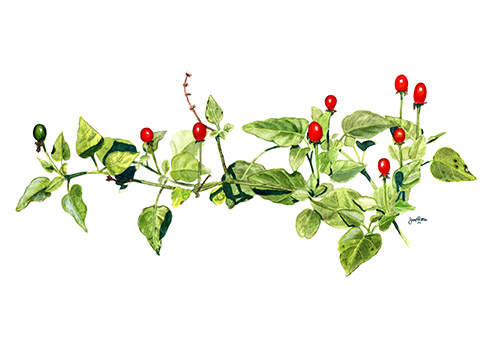
Is it hot in here, or is it just Texas’ State Native Pepper, the pretty little Capsicum annuum? Known by many common names — chiltepin, chile pequin, chile tepin, bird pepper and more — these fiery favorites of humans and birds (who have less sensitive tongues than we do) are found in popular hot sauces like Cholula and are several notches spicier than the non-native State Pepper of Texas, the jalapeño.
Texas State Grass: Sideoats Grama
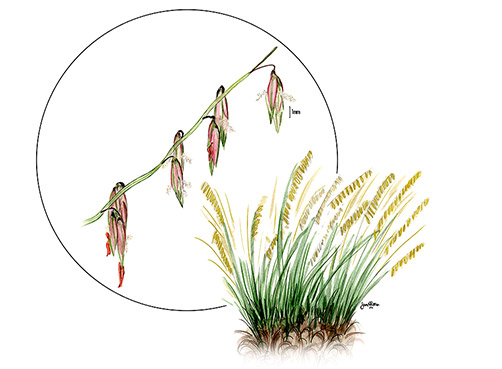
Texas’ State Grass, sideoats grama (Bouteloua curtipendula), is a bunchy species that gets its name from the purplish-red spikelets that form along one edge of its stems. Call it nature’s fringe! Though we don’t think any crafty clothiers have tried to adorn apparel with it just yet — and they shouldn’t, because sideoats grama acts as important wildlife forage and is larval host to five types of skippers! Lots of plants are beneficial to butterflies and moths; study up with our butterflies and moths of North America special collection.
Texas State Native Shrub: Texas Purple Sage
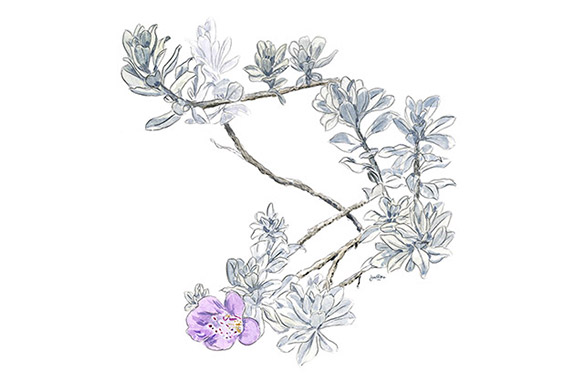
You know how Texas purple sage (Leucophyllum frutescens), also known as cenizo, tends to absolutely explode with pinkish lavender blooms after it rains? This plant, which is Texas’ State Native Shrub (the non-native Texas State Shrub is the crape myrtle), responds to increased humidity and often boasts a purple patina after summer storms. Though it does bear the nickname “barometer bush,” this shrub doesn’t predict the weather by sensing and responding to changes in barometric pressure; according to our Native Plant Database program coordinator, “It watches Jim Spencer on KXAN just like the rest of us.”
Texas State Insect: Monarch Butterfly
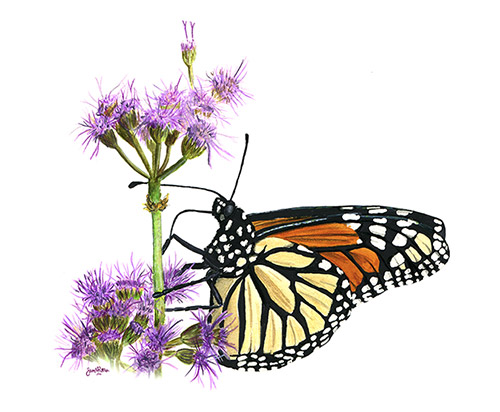
While celebrating official state flora for Texas Native Plant Week, it only seemed natural (pun intended) to shine the spotlight on wildlife as well. Of course there’s plenty of fascinating Texas state fauna out there, but Texas’ State Insect, the much-loved monarch butterfly (Danaus plexippus), depends on native plants — from milkweeds to fall and spring nectar flowers — in order to grow, eat and power long, multigenerational migrations. Learn more on our Project Milkweed page and plant a few fall nectar plants today to help power the monarchs’ current southern migration! Don’t be afraid to demand native pollinator plants from nurseries and garden centers, and remember you can always stock up on native pollinator plants at our Spring and Fall Native Plant Sales.
Texas State Tree (and Health Nut…and Pie!): Pecan
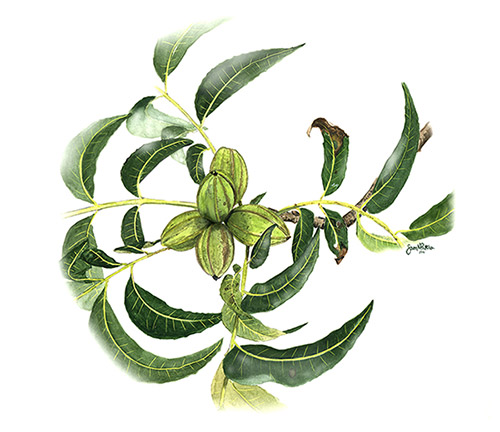
Texas Native Plant Week offers plenty of reasons to go nuts! Our Texas State Tree, Texas State Health Nut and Texas State Pie all go by the same name: pecan! Despite being a southern favorite, pecans are known scientifically as Carya illinoinensis, which refers to the region where early traders found wild trees and nuts. We can probably all agree that pecans are wondrous in their state pie format, all nestled in sugary syrup atop a crisp crust, but they’re also quite tasty (and better for you) straight up. Want more Texas trees? Visit our Texas Arboretum and join us for some arboreal events tied to Texas Arbor Day in early November.
Love these illustrations? We do too! They are the work of science illustrator Samantha N. Peters. Samantha attended the School of Medicine at The University of Texas Health Science Center in San Antonio but left once she realized illustrating her study guides was more fun than actually studying them. Eventually attending the graduate program in Science Illustration at California State University, Monterey Bay, she interned with the Smithsonian National Museum of Natural History and at the Wildflower Center. Lucky us! See more of her incredible work here.

